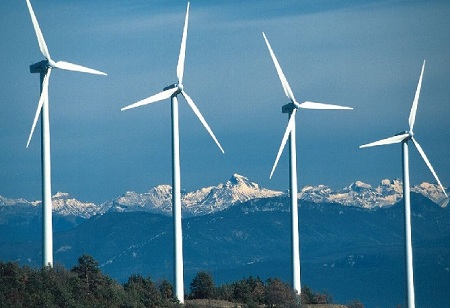The ministries of new and renewable energy (MNRE) and petroleum and natural gas (MoPNG) are in talks to link the exploration of offshore hydrocarbon blocks with offshore wind farms for better synergy. The idea's general contours are being worked on, and early discussions with stakeholders have been encouraging, the officials stated.
"The idea we're working on is a nice one. Combining offshore hydrocarbon blocks with wind farms is intended to extract the most energy possible from a single resource or block. The first government official, who spoke on the condition of anonymity, said, "We are working on the details of the proposal. This concept gains importance as India prepares to launch its first offshore wind seabed lease tender soon. On May 16, MNRE joint secretary Dinesh Jagdale stated during a side event of the third Energy Transitions Working Group of the G-20 presidency of India in Mumbai
that the nation's first offshore wind seabed lease tender is anticipated to be floated within the next 4-6 weeks. Despite having 7,600 kilometres of coastline, Gujarat has the longest at 1,600 km, followed by Tamil Nadu at 1,076 km.Offshore wind project development has been sluggish in India. With a combined potential of roughly 70 GW, the initial phase of offshore wind projects would be situated along Gujarat's and Tamil Nadu's coasts.
By 2030, the government intends to publish tenders for seabed leases totaling 37 GW. The governments of Gujarat and Tamil Nadu both expressed interest in acquiring offshore wind power for the initial projects at a reasonable pricing cost of Rs 4 per unit. The pairing of offshore wind farms and hydrocarbon blocks will benefit energy corporations, according to the second government official.
"Even while exploration and production companies are aiming towards net zero energy production, they are also diversifying their energy mix and striving to increase oil and gas production. We are considering how to give the corporations a choice to achieve both objectives, he added, noting that India has a large number of hydrocarbon reserves with promising wind power potential. India has pledged to minimise global warming as part of its decarbonization efforts by generating 500 GW of renewable energy by 2030, including about 140 GW from wind energy.
The government is also considering the notion of offering financial help through viability gap funding (VGF) to boost the expansion of offshore wind energy and make projects more appealing to developers. For the VGF model, MNRE has asked the finance ministry for permission. Although the current cost of establishing such projects demands financial support from the government, the eventual goal is to attain a tariff rate of $4 per unit for offshore wind generation.
